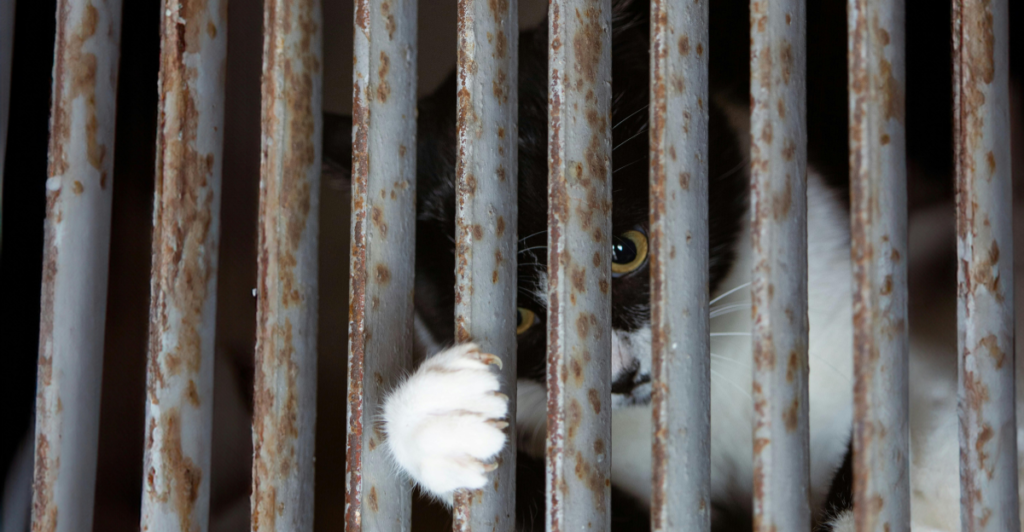
As temperatures drop, many cat owners may wonder if it’s time to bring their outdoor feline friends inside. The truth is that living indoors is significantly safer for cats. They’re protected from speeding cars, other animals, and dangerous toxins. Plus, they won’t pose a threat to local wildlife. Transitioning an outdoor cat to an indoor lifestyle may seem challenging, but with patience and the right approach, it can be done successfully. Here’s a step-by-step guide to help you bring your cat inside before winter.
The Benefits of Indoor Living

Living indoors protects cats from various outdoor dangers. Fast-moving cars, wild animals, toxic substances, and harsh weather all pose risks. Indoors, cats are also safer from diseases that can spread outdoors and are less likely to hunt small animals, which benefits the local ecosystem.
Understanding Feral Cats

Before starting the process, it’s essential to understand the difference between feral and stray cats. Feral cats have little or no human interaction, but this doesn’t mean they can’t adapt to indoor life. While it may take extra time and effort, even feral cats can learn to trust humans and find comfort indoors.
Use Safe Traps for Capture

Never attempt to grab a feral or outdoor cat by hand—it’s stressful for the cat and can lead to injury. Instead, use a humane trap with a closing door. These traps are designed to safely contain the cat, allowing you to transport them indoors without harm.
Visit the Veterinarian for Spaying or Neutering

Once you’ve safely captured the cat, schedule a vet appointment to have them spayed or neutered. This procedure reduces their instinct to roam in search of mates and decreases the chances of them trying to escape back outside. It also helps prevent unwanted litters if they do get out.
Allow Time to Adjust

Moving indoors can be overwhelming for an outdoor cat, so give them time to adjust. If a trap was used, let them rest in it for an hour or two before releasing them into a small, quiet room. Provide essentials like food, water, a litter box, and cozy spaces. Slowly introduce them to the rest of the home as they grow more comfortable.
Keep Them Engaged with Fun Toys

Outdoor cats are used to hunting, climbing, and exploring, so they’ll need mental and physical stimulation inside. Offer a variety of toys, scratching posts, and interactive play sessions to keep them entertained. This helps prevent boredom and destructive behaviors.
Create a Catio for Safe Outdoor Time

If your cat still longs for the outdoors, consider building a “catio,” a secure, enclosed patio for cats. It allows them to feel the breeze, enjoy the sights and sounds of nature, and bask in the sun, all while staying safe from external dangers.
Use Calming Pheromones

Transitioning from outdoors to indoors can be stressful for cats. Pheromone diffusers or sprays mimic natural calming signals, helping your cat relax and feel more at ease in their new environment. This can reduce anxiety and make the adjustment smoother.
Be Patient and Understanding

Patience is key when bringing an outdoor cat inside. Allow them to explore their surroundings at their own pace, and avoid forcing interactions. Every cat is different—some will warm up quickly, while others may take weeks or months to feel fully comfortable.
Provide Comfort and High Spaces

Cats instinctively look for safe, elevated spaces where they can observe their environment. Set up cat trees, perches, or shelves for your new feline friend. Soft blankets and cozy hiding spots also help them feel secure during their adjustment period.
Prevent Problems Before They Start

Work with your veterinarian to address any behavioral or health concerns early on. Ensure there are enough litter boxes in your home (one per cat, plus one extra), and offer scratching surfaces and quiet spaces. Addressing these needs upfront helps prevent common issues like litter box avoidance or destructive scratching.
Keep Your Cat’s Safety in Mind

Bringing an outdoor cat indoors before winter is ultimately a decision to keep them safe and healthy. With the right tools, plenty of patience, and a proactive approach, your cat can successfully transition to an indoor life. Over time, they’ll learn to enjoy the comfort and security of their new home, free from outdoor hazards.
Stay connected with us for more stories like this! Follow us to get the latest updates or hit the Follow button at the top of this article, and let us know what you think by leaving your feedback below. We’d love to hear from you!







